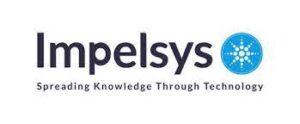The Impact of Data on eLearning
In our increasingly digital environment, eLearning has emerged as a cornerstone of contemporary education and corporate training. As organizations increasingly invest in tailored eLearning solutions and robust Learning and Development strategies, the role of analytics becomes paramount in boosting eLearning effectiveness. By leveraging data-driven insights, educators and corporate trainers can refine eLearning content, track learner progress, and drive significant enhancements in educational outcomes.
Analytics within eLearning encompasses the collection, measurement, analysis, and reporting of data regarding learners and their interactions with digital content. This information can be utilized to improve every facet of the learning journey—from Learning Management System (LMS) course design to content dissemination and learner engagement.
With the advent of advanced learning management systems, organizations now have access to a treasure trove of data. This includes metrics like time spent on modules, quiz performance, completion rates, and behavioral trends such as click paths and engagement heatmaps. When interpreted effectively, this data serves as a powerful catalyst for continuous improvement.
Refining Course Content Through Analytics
One of the most significant applications of analytics lies in optimizing course content. By analyzing learner performance and feedback, Instructional Designers can pinpoint which modules are impactful and which require enhancement. For example, if many learners find a quiz challenging or discontinue a module prematurely, it signals that the content may be overly complex or not engaging enough.
Custom eLearning development teams can use these findings to revamp content, incorporate multimedia elements, or simplify complex topics into more accessible segments. This iterative approach ensures that the learning material remains relevant, captivating, and tuned to learner needs.
Monitoring Learner Progress and Engagement
Analytics is crucial for tracking learner progress. Through learning management software, educators can monitor real-time individual and group performance. This facilitates timely interventions—such as providing additional resources for struggling learners or offering advanced materials for top performers.
Furthermore, engagement metrics—like time allocated to tasks, participation in discussions, and login frequency—allow for the identification of learners who may be at risk of falling behind. By proactively addressing these challenges, organizations can cultivate a more supportive and effective learning atmosphere.
Improving Learning Outcomes
Ultimately, the objective of any eLearning initiative is to enhance learning outcomes. Analytics enables organizations to assess the efficacy of their training programs against Key Performance Indicators (KPIs). These could include metrics like knowledge retention rates, skill application on the job, or overall employee performance improvements.
By aligning analytics with organizational goals, companies can ensure their eLearning solutions provide measurable value. For instance, tracking the influence of a compliance training program on audit performance or the effect of a sales training module on revenue growth exemplifies this alignment.
Personalizing the Educational Experience
Another important advantage of analytics is its capacity for personalizing the learning experience. Much like streaming platforms recommend content based on user behavior, customized eLearning solutions can adapt to individual learning styles and preferences. This could encompass offering various content formats (videos, infographics, text), modifying difficulty levels, or suggesting supplementary materials.
This personalization not only increases engagement but also enhances retention and learner satisfaction, transitioning the traditional one-size-fits-all approach into a dynamic, learner-centric framework.
Integrating Data Analytics with eLearning Tools
To fully harness the power of analytics, it’s vital to seamlessly integrate it with your eLearning development tools and platforms. Many modern learning management solutions already come with built-in analytics dashboards. These tools provide clear visualizations and reports that simplify data interpretation and support informed decision-making.
Moreover, integrating analytics with eBook conversion tools can unveil insights regarding how learners interact with digital reading content. For instance, tracking which sections are frequently highlighted or bookmarked can guide future content enhancements.
The Future of Data-Driven Learning
As technology advances, the significance of analytics in eLearning will only magnify. Emerging technologies like Artificial Intelligence and Machine Learning are set to elevate analytics capabilities, offering predictive insights and automated content suggestions.
Organizations that embrace these innovations will be better positioned to deliver engaging, efficient, and impactful learning experiences. By investing in custom eLearning development and advanced analytics, they can remain ahead of the curve and drive continuous improvement in their training programs.
Conclusion: Embracing Data in eLearning
Incorporating analytics into your eLearning strategy has transitioned from being optional to essential. From optimizing content and tracking progress to personalizing experiences and improving outcomes, data-driven insights are crucial for unlocking the full potential of your Learning and Development initiatives. Whether you are embarking on LMS course creation or enriching your existing eLearning offerings, embracing analytics will ensure that your programs are not only effective but also equipped for the future.

Impelsys
Impelsys is a leader in providing learner-centric digital courseware solutions and comprehensive end-to-end learning management systems. With over 20 years of experience, we specialize in designing interactive, personalized, and engaging custom eLearning courses.



